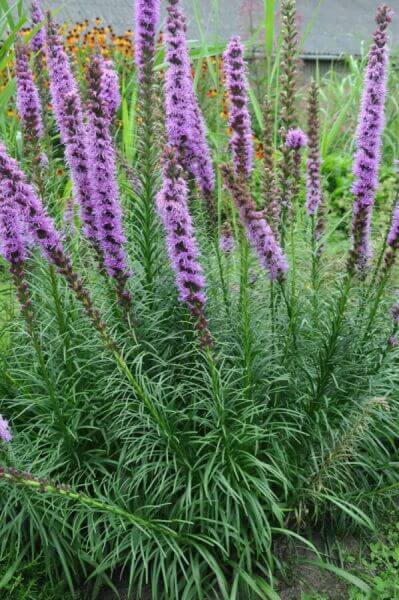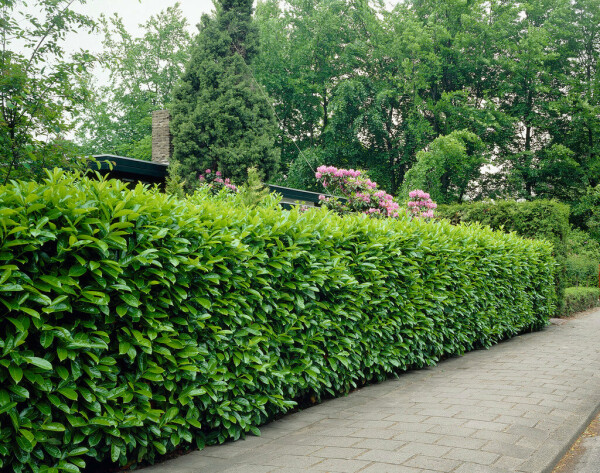Hedge Plants For Community Gardens
Hedge Plants For Community Gardens
Blog Article
Hedge Plants For Classic Borders
Improve your garden's appeal with lush hedge ranges such as Yew (Taxus), Thuja, Laurel, Photinia, and Bamboo, commemorated for their structural integrity and ecological benefits.
Yew and Thuja supply evergreen coverage and winter season resilience, while Laurel provides quick growth and broad, aromatic leaves.
Photinia includes seasonal charm with its dynamic red foliage, and Bamboo lends a low-maintenance, tranquil ambiance.
These hedges enhance air quality, minimize noise, and develop tranquil, personal spaces.
Proper planting, spacing, and maintenance make sure energetic development and environmental consistency.
Check out how these rich ranges can elevate your garden's appeal and well-being.
Key Takeaways
Change Your Garden With Lush Hedge Ranges
- Select Yew for its thick, evergreen growth and exceptional durability.
- Opt for Laurel for its fast development and broad leaves, making sure quick privacy.
- Select Photinia for its dynamic seasonal foliage, which turns a striking dark red.
- Utilize Bamboo for a low-maintenance, winter-hardy hedge with visual appeal.
- Area plants 2-3 per meter and prune frequently for ideal development and health.
Popular Hedge Plants
When transforming a garden with rich hedge varieties, it's important to think about popular hedge plants such as Yew, Thuja, Laurel, and Photinia due to their distinct attributes and benefits.
Yew (Taxus) is extremely respected for its durability and thick, green growth, making it a prime choice for enduring landscapes.
Thuja is noted for its evergreen foliage and robust winter season strength.
Photinia includes seasonal vibrancy with red leaves that darken with time, creating dynamic visual appeal.
Laurel offers rapid development and aromatic, broad leaves, perfect for fast personal privacy.
Furthermore, Bamboo is an exceptional option for ambiance, offering a low-maintenance, winter-hardy option that boosts the garden's visual with its sophisticated, swaying walking sticks.
These selections deal with a range of horticultural needs and preferences.
Benefits of Garden Hedges
Garden hedges use a plethora of advantages, making them a valuable addition to any landscape. These natural barriers are cost-effective to carry out and offer considerable wind protection, boosting air flow and contributing to sound decrease. The dense foliage of hedges like Thuja and Beech makes sure privacy by obstructing exposure, creating a secluded and peaceful environment.
Hedges also play a crucial function in microclimate policy, providing a steady environment that fosters plant development and reduces temperature variations. Their elaborate leaf structures filter toxins, improving air quality and adding to a healthier garden environment.
Moreover, hedges stand out in noise decrease, taking in and deflecting acoustic waves to lower ambient noise levels. This double performance of offering both acoustic and visual privacy boosts the overall serenity and visual appeal of any garden.
Planting and Upkeep Tips
For an effective hedge, meticulous preparation of the planting area is vital. Ensure the soil has appropriate pH and drain to support strong root development.
Area the plants properly for the chosen types. Water the hedge regularly during its initial growth stage, changing as needed with seasonal changes.
Execute a organized bug control and disease prevention method, utilizing chemical or organic treatments when required. Routinely check for aphids, termites, and fungal infections.
Apply mulch to retain moisture and reduce weeds. Seasonal pruning promotes dense growth and air flow, vital for plant health.
Following these standards will assist you cultivate a lively, properly maintained hedge that enhances the beauty of your garden.
Spacing and Trimming Guidelines
Spacing and Trimming Standards
Proper spacing and trimming are essential for cultivating healthy, visually appealing hedges. Sufficient spacing guarantees each plant receives adequate nutrients, light, and airflow.
Follow these guidelines for optimal hedge maintenance:
- Spacing: Position hedge plants 2-3 plants per meter to motivate robust development.
- Pruning Methods: Regular pruning is important for preserving desired hedge height and shape. Trim new growth in summertime and cut back older wood during winter season.
- Seasonal Care: Change cutting techniques and schedules according to seasonal requirements to ensure plant health.
- Hedge Height: Regularly display and cut to keep the wanted hedge height and accomplish uniform visual appeals.
Abiding by these steps will ensure your hedge grows, improving both the appeal and functionality of your garden.
Choosing the Right Hedge
Picking the Right Hedge
Choosing the appropriate hedge involves examining elements such as mature height, foliage density, and ecological durability. Effective hedge plant choice requires comprehending each species' growth attributes and site-specific versatility.
For instance, Yew (Taxus) provides excellent durability and dense growth, while Thuja is notable for its winter season resilience. Furthermore, considering upkeep requirements is essential; fast-growing types like Laurel or Privet demand routine trimming, whereas low-maintenance choices like Bamboo or Ivy may be more suitable for those looking for minimal maintenance.
Environmental elements such as soil type, light schedule, and moisture conditions need to also guide the choice process. This mindful method makes sure the chosen hedges will prosper, providing both aesthetic and practical advantages to the garden landscape.
Shipment and Planting Guidance
To guarantee your hedge plants flourish, they must be provided by specialized couriers and planted quickly upon arrival.
Follow these vital actions for successful planting:
- Soil Preparation: Enrich the soil with raw material to improve drainage and nutrient content.
- Planting Depth: Create a trench twice the width and equivalent to the depth of the root ball.
- Watering Strategies: Water completely after planting, keeping the soil consistently moist but not filled.
- Mulching: Use a layer of mulch to maintain wetness and suppress weeds.
Customer Support and Service
Provided the important function of prompt help in horticultural pursuits, our consumer assistance group is available six days a week through telephone, email, and social media to provide professional recommendations and quickly attend to any issues. Their devotion to fast reaction times guarantees client complete satisfaction by fixing inquiries associated with plant health, ideal planting techniques, and maintenance schedules.

Within 24 hours
This extensive support group, enhanced by an excellent 9.3/ 10 consumer ranking, highlights our dedication to enhancing the gardening experience for each client.
Often Asked Questions
For How Long Does It Consider Hedge Plants to Develop?
Hedge plants usually need Additional info one to 3 years to end up being completely developed, with the precise duration varying by species and growing conditions.
Effective care during this important duration is necessary for robust development. Constant watering, watchful weed control, and suitable fertilizer application are pivotal in promoting strong root development.
For instance, fast-growing types like Laurel might establish faster, while slower-growing varieties such as Yew may take longer. Thorough upkeep accelerates the establishment procedure, leading to dense and healthy hedges.
What Are the Finest Hedge Plants for Personal Privacy?
The concern of the best hedge plants for privacy includes assessing evergreen and deciduous choices.
Evergreen hedges like Thuja, Laurel, and Cypress provide year-round protection, guaranteeing continuous personal privacy.
On the other hand, deciduous hedges such as Beech provide seasonal privacy, shedding leaves in colder months.
Secret maintenance tips for personal privacy hedges include regular cutting, fertilizing in spring, and proper spacing-- normally 2 to 3 plants per meter.
Furthermore, consistent watering and thorough weed removal are crucial for promoting healthy, thick growth.
Can Hedge Plants Bring In Wildlife to My Garden?
Yes, hedge plants can draw in wildlife to your garden by offering important advantages like shelter, food, and nesting sites, consequently boosting local biodiversity. For instance, yew, holly, and laurel are exceptional for drawing in birds, while ivy supports a range of insects.
Nevertheless, it is necessary to note that there are some downsides, such as increased maintenance to handle pests and regular maintenance. Carefully picking and keeping hedge ranges can help stabilize these drawbacks and benefits, eventually fostering a dynamic and sustainable ecosystem in your garden.
Are There Any Blooming Hedge Plants Available?
Yes, there are flowering hedge plants available that can enhance the charm of your garden.
For instance, Elaeagnus, also known as Olive Willow, produces aromatic white flowers in the fall, including a touch of elegance.
Photinia, another popular choice, showcases dynamic red leaves that grow into an abundant green, creating a dynamic visual impact throughout the seasons.
To guarantee these plants grow, it's vital to practice appropriate pruning methods and seasonal upkeep, such as cutting brand-new development in the summer and cutting back in the winter.
These steps will assist preserve the health and visual appeal of your blooming hedges.
How Do I Avoid Bugs in My Hedge Plants?
To avoid bugs in hedge plants, use natural bug control approaches and keep correct hedge care. Present helpful pests like ladybugs, which victimize damaging bugs, to develop a well balanced environment.
Frequently check your hedges for indications of problem and immediately eliminate any afflicted parts to prevent the spread. Guarantee the health of your hedges by applying balanced fertilizers and supplying appropriate water.
Make use of mulching to keep soil moisture and proper spacing to reduce plant tension and promote robust development. These practices collectively help in decreasing bug problems and maintaining a healthy hedge.
Conclusion
In essence, choosing the ideal hedge ranges such as Yew, Thuja, and Laurel can transform any garden into a tranquil sanctuary. These plants offer year-round greenery, enhance visual appeal, and offer practical advantages like noise reduction and wind defense.
Appropriate planting techniques, precise spacing, consistent watering, and seasonal cutting are crucial for optimal development.
Trusted shipment services and expert consumer support ensure a smooth experience from purchase to planting, making it simpler than ever to raise your outdoor area.
Garden hedges offer a multitude of advantages, making them a valuable addition to any landscape. These natural barriers are cost-efficient to implement and supply significant wind defense, enhancing air blood circulation and contributing to noise decrease. The dense foliage of hedges like Thuja and Beech guarantees personal privacy by obstructing presence, creating a secluded and tranquil environment.

Pruning Methods: Regular pruning is essential for keeping preferred hedge height and shape. Trim brand-new growth in summer and cut back older wood throughout winter.
Report this page